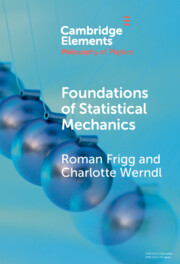7 results

Foundations of Statistical Mechanics
-
- Published online:
- 12 December 2023
- Print publication:
- 18 January 2024
-
- Element
-
- You have access
- Open access
- HTML
- Export citation
Mind the Gap: Boltzmannian versus Gibbsian Equilibrium
-
- Journal:
- Philosophy of Science / Volume 84 / Issue 5 / December 2017
- Published online by Cambridge University Press:
- 01 January 2022, pp. 1289-1302
- Print publication:
- December 2017
-
- Article
- Export citation
The Diversity of Model Tuning Practices in Climate Science
-
- Journal:
- Philosophy of Science / Volume 83 / Issue 5 / December 2016
- Published online by Cambridge University Press:
- 01 January 2022, pp. 1133-1144
- Print publication:
- December 2016
-
- Article
- Export citation
Philosophy of the Precautionary Principle, Daniel Steel. Cambridge University Press, 2015, xv + 256 pages.
-
- Journal:
- Economics & Philosophy / Volume 32 / Issue 1 / March 2016
- Published online by Cambridge University Press:
- 08 January 2016, pp. 162-169
-
- Article
- Export citation
Rethinking Boltzmannian Equilibrium
-
- Journal:
- Philosophy of Science / Volume 82 / Issue 5 / December 2015
- Published online by Cambridge University Press:
- 01 January 2022, pp. 1224-1235
- Print publication:
- December 2015
-
- Article
- Export citation
Demystifying Typicality
-
- Journal:
- Philosophy of Science / Volume 79 / Issue 5 / December 2012
- Published online by Cambridge University Press:
- 01 January 2022, pp. 917-929
- Print publication:
- December 2012
-
- Article
- Export citation
Explaining Thermodynamic-Like Behavior in Terms of Epsilon-Ergodicity
-
- Journal:
- Philosophy of Science / Volume 78 / Issue 4 / October 2011
- Published online by Cambridge University Press:
- 01 January 2022, pp. 628-652
- Print publication:
- October 2011
-
- Article
- Export citation



